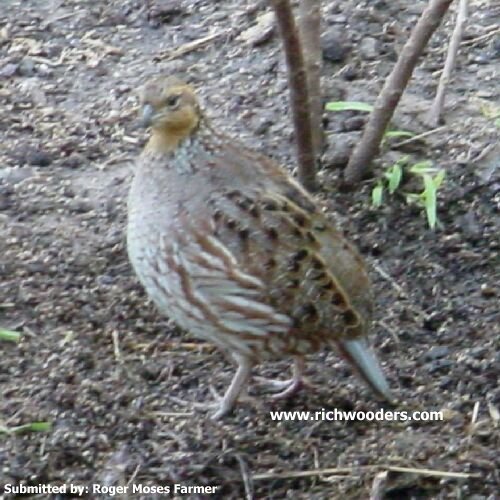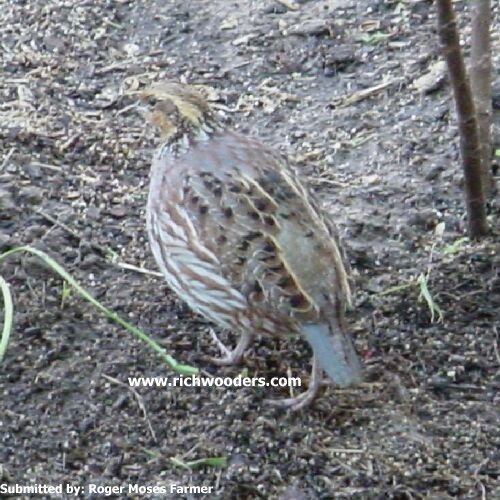A West Virginian sent me these birds pics this morning. In the body of the message he identified the bird as a Ruffed grouse of some kind, but wasn’t sure.
| www.richwooders.com | | Wildlife Index! | ||


Permanent resident of West Virginia
Ruffed grouse (Bonasa Umbellus) use of stands harvested via alternative regeneration methods in the southern AppalachiansDescription: Ruffed grouse (Bonasa umbellus L.) habitat use was studied in the mountains of western North Carolina. In 1997, 9 stands on the study site were harvested via alternative regeneration methods, including shelterwood, irregular shelterwood, and group selection. From 1999–2004, 276 grouse were radio tagged and monitored, resulting in over 7,000 location estimates. Habitat use differed from availability in all seasons. Preferred habitats included gated forest roads, 3–20-year old mixed-oak, late rotation mixed-oak, and mature mesic hardwoods. Shelterwood and two-aged stands created by irregular shelterwood were among habitats preferred in fall, winter, and spring. Group selections were among habitats preferred by broods in summer. Use of alternative regeneration stands began 3 years after harvest and continued through study completion (6 years post-harvest). Hardwood stem density in alternative regeneration stands was within the range recommended for ruffed grouse habitat. With proper implementation, alternative regeneration methods can create quality ruffed grouse habitat in the Appalachian region.
Many states in the U.S. have Ruffed grouse hunting seasons that run from September through January,
| Richwood | West Virginia | |||
General references:
(1) Gough, G.A., Sauer, J.R., Iliff, M. Patuxent Bird Identification Infocenter. 1998. Version 97.1. Patuxent Wildlife Research Center, Laurel, MD. http://www.mbr-pwrc.usgs.gov/id/framlst/infocenter.html
(2) Source: e-Gen. Tech. Rep. SRS–101. U.S. Department of Agriculture, Forest Service, Southern Research Station: 375-382
Web Site Hosted by [ Billybob and www.richwooders.com]
